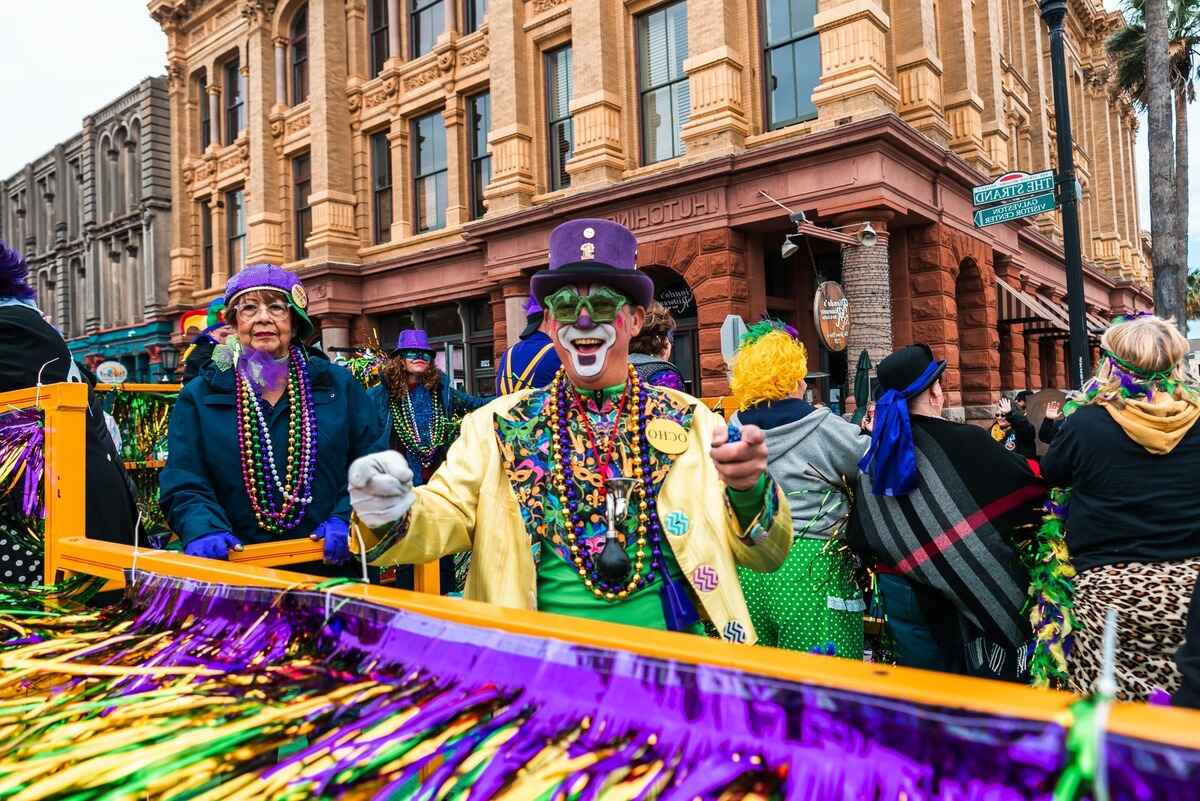
Ever wondered what makes Mardi Gras the spectacular event it is today? Mardi Gras isn't just a day; it's a season of colors, costumes, and, of course, mouth-watering king cake. But hey, there's more to this vibrant festival than meets the eye. From its origins to the unique traditions that vary from city to city, Mardi Gras is a celebration steeped in rich history and fascinating facts that many folks might not know. Whether you're a Mardi Gras veteran or planning your first dive into the festivities, prepare to be dazzled by some of the most intriguing and lesser-known facts about this iconic celebration. Ready to jazz up your knowledge on Mardi Gras? Let's get the party started!
Key Takeaways:
- Mardi Gras, also known as Fat Tuesday, originated in medieval Europe and arrived in North America with French explorers in 1699. It's celebrated with unique traditions, vibrant colors, and delicious food, making it a global phenomenon.
- The traditional Mardi Gras colors of purple, green, and gold represent justice, faith, and power. The celebration includes the King Cake tradition, diverse global festivities, and a growing focus on environmental sustainability.
Origins of Mardi Gras
Mardi Gras, also known as Fat Tuesday, traces its roots back to medieval Europe. From Rome and Venice in the 17th and 18th centuries to the French House of the Bourbons, the tradition of celebrating the day before Lent has flourished. Mardi Gras arrived in North America as a French Catholic tradition with the Le Moyne brothers, who came to defend France's claim on Louisiana.
- The very first American Mardi Gras took place on March 3, 1699, when French explorers Pierre Le Moyne d'Iberville and Sieur de Bienville landed near present-day New Orleans. They held a small celebration and dubbed the spot Point du Mardi Gras.
Mardi Gras Colors and Their Meanings
Each color of Mardi Gras has a specific meaning. Selected in 1872 to honor the visiting Russian Grand Duke Alexis Romanoff, the traditional colors reflect the Romanoff family's heraldry.
- Purple stands for justice; green signifies faith; and gold represents power. These colors are now synonymous with the event, adorning decorations, costumes, and floats.
The King Cake Tradition
A delicious part of Mardi Gras is the King Cake, a confection that comes with a hidden surprise. Traditionally, a small figurine, often a baby to represent Jesus, is baked inside the cake.
- Whoever finds the figurine in their slice is expected to host the next King Cake party, continuing the cycle of festivities throughout the Carnival season.
Mardi Gras Around the World
While most famous in New Orleans, Mardi Gras is celebrated in various forms around the globe. Each location adds its unique twist to the festivities.
- In Rio de Janeiro, it's called Carnival and is famous for its samba schools parading through the Sambadrome.
- Venice's Carnevale is known for its elaborate masks and costumes.
- Binche, Belgium, has a Mardi Gras festival featuring Gilles, clown-like performers wearing wax masks and wooden clogs.
The Role of Krewes in Mardi Gras
Krewes are the heart and soul of New Orleans Mardi Gras. These organizations are responsible for planning the parades and balls during the Carnival season.
- The oldest continuous krewe, the Mistick Krewe of Comus, was founded in 1857.
- Krewes often have a philanthropic aspect, contributing to community service and local charities throughout the year.
Unique Mardi Gras Traditions
Mardi Gras is full of unique traditions that vary from one celebration to another. These customs add to the rich tapestry of the event's history.
- In New Orleans, it's customary to shout "Throw me something, Mister!" to parade participants, hoping to catch beads, cups, and doubloons.
- Mobile, Alabama, claims to have the oldest Mardi Gras celebration in the United States, dating back to 1703.
- The New Orleans Police Department (NOPD) officially starts the city's Mardi Gras on horseback, a tradition signaling the beginning of the festivities.
Environmental Impact and Modern Changes
As awareness grows about environmental sustainability, Mardi Gras celebrations are adapting to reduce their ecological footprint.
- Biodegradable beads and other eco-friendly throws are becoming more popular, replacing the traditional plastic beads that can harm wildlife and waterways.
- Some krewes have started using LED lights on their floats to save energy.
Mardi Gras Food Beyond King Cake
While King Cake is a staple of Mardi Gras cuisine, the celebration includes an array of other delicious dishes.
A Colorful Finale to Our Mardi Gras Adventure
Mardi Gras, with its rich history, vibrant parades, and colorful traditions, offers more than just a day of festivities; it's a cultural phenomenon that brings communities together in celebration. From the hidden meanings behind the iconic colors to the global influence of this festivity, each fact we've uncovered adds another layer to the intricate tapestry of Mardi Gras. Whether you're catching beads at a parade, savoring a slice of king cake, or simply enjoying the spirited atmosphere, these tidbits enhance your appreciation for this beloved holiday. So, next time Mardi Gras rolls around, you'll not only be ready to join in the fun but also to share some fascinating facts with friends and family, making the celebration even more memorable. Let the good times roll, and may your Mardi Gras be filled with joy, laughter, and plenty of surprises.
Frequently Asked Questions
Was this page helpful?
Our commitment to delivering trustworthy and engaging content is at the heart of what we do. Each fact on our site is contributed by real users like you, bringing a wealth of diverse insights and information. To ensure the highest standards of accuracy and reliability, our dedicated editors meticulously review each submission. This process guarantees that the facts we share are not only fascinating but also credible. Trust in our commitment to quality and authenticity as you explore and learn with us.


